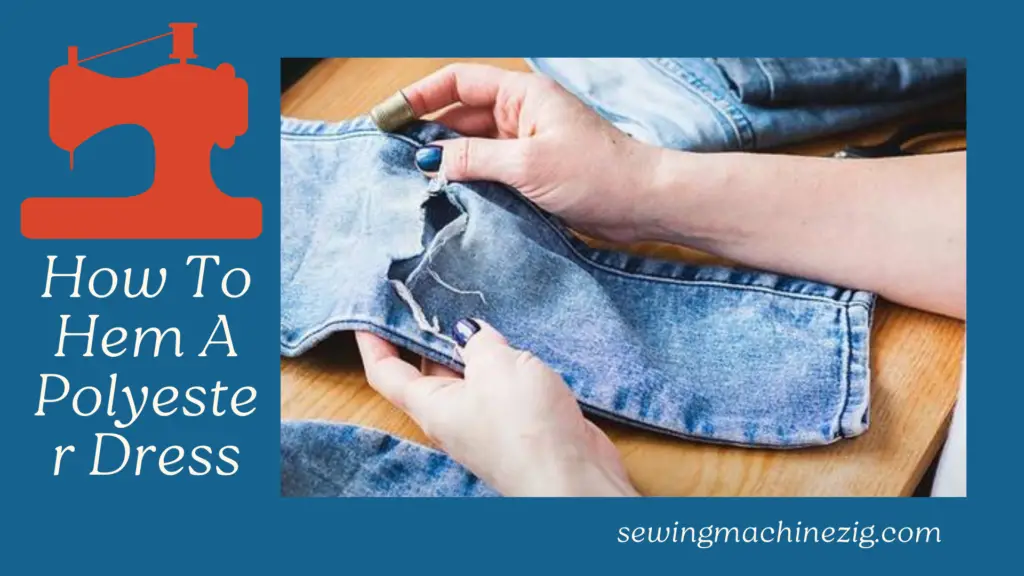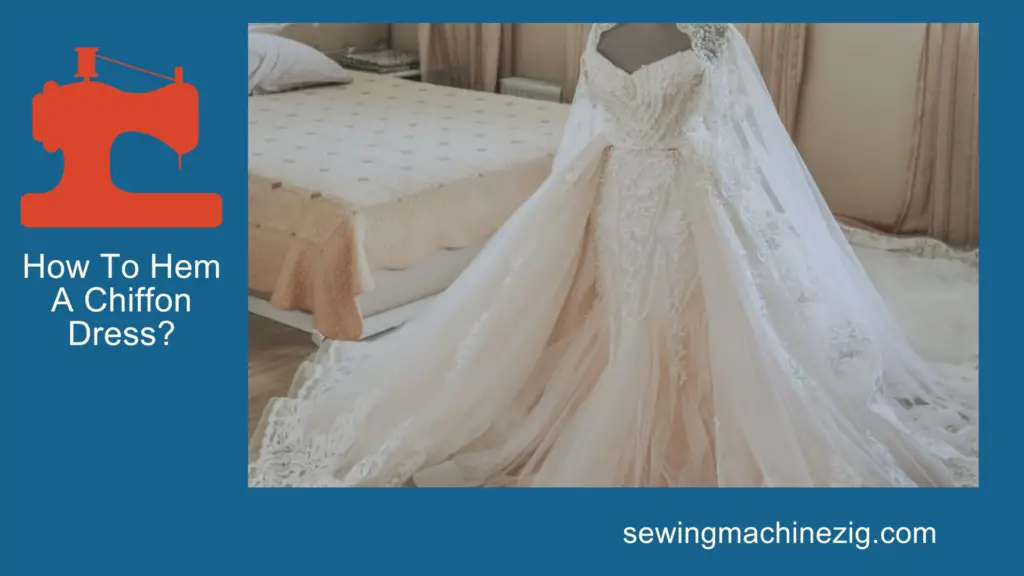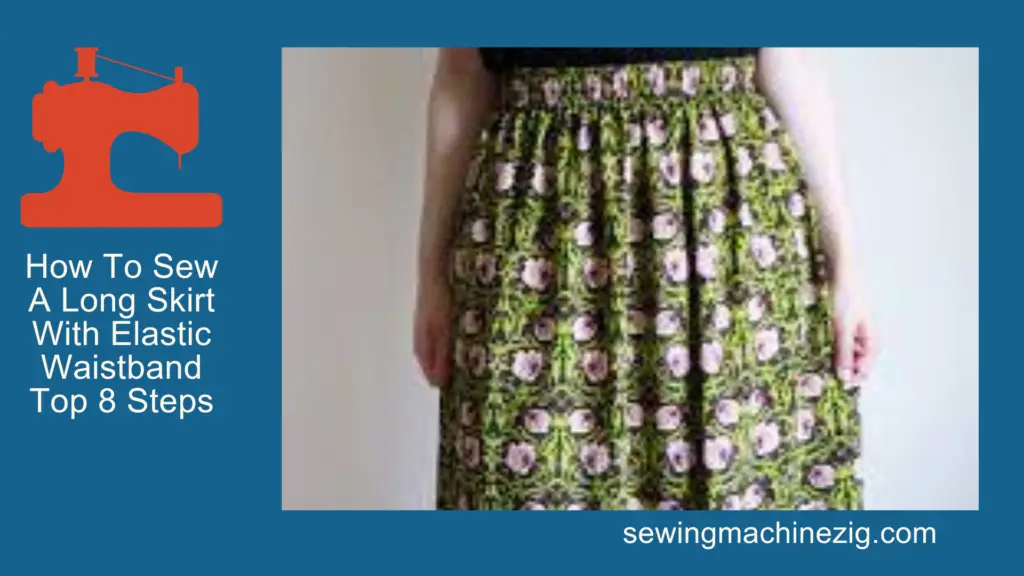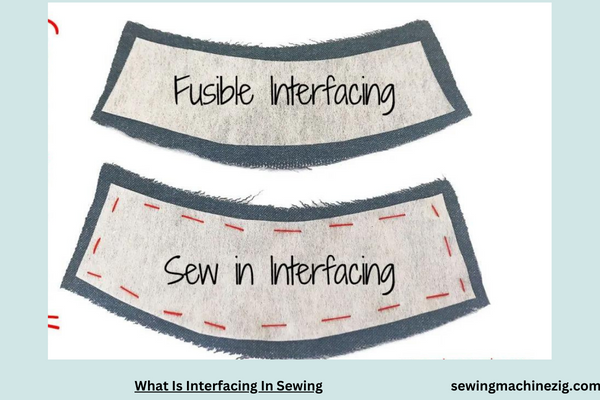
Diving into the realm of sewing intricacies, one encounters the enigma of “interfacing.” A linchpin in textile artistry, interfacing is the clandestine ally that elevates fabrics beyond their inherent nature.
Delving into the fusion of threads and textiles, this guide demystifies the question: “What Is Interfacing In Sewing?” Unravel the complexity of this hidden artisan, where every fiber intertwines with purpose. From structural fortification to aesthetic finesse, interfacing becomes the silent architect in the creation of tailored masterpieces. Explore the interplay of creativity and substance as we decode the secret language of interfacing.
What Is Interfacing In Sewing Detailed Answer
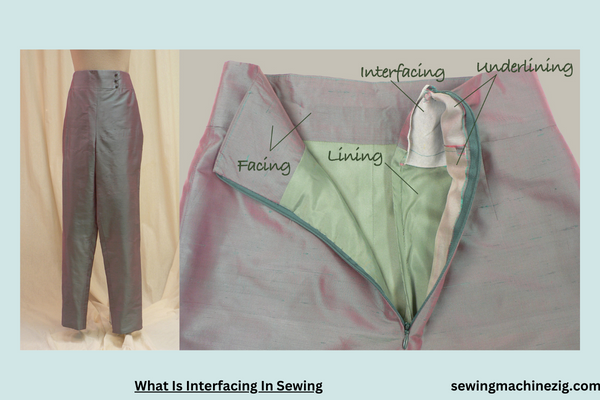
Understanding the concept of interfacing is crucial for any aspiring or seasoned seamstress. In this comprehensive guide, we’ll delve into the intricacies of what interfacing is in sewing, its types, and step-by-step instructions on how to use it effectively to enhance your sewing projects.
What Is Interfacing in Sewing?
Interfacing is a textile layer applied to the wrong side of fabric to add structure, stability, or reinforcement to specific areas of a garment. It is commonly used in areas such as collars, cuffs, plackets, and waistbands to provide support and prevent distortion.
Types of Interfacing:
- Woven Interfacing:
- This type of interfacing is made from woven fabric and provides stability without compromising flexibility. It is suitable for lightweight to medium-weight fabrics.
- Non-Woven Interfacing:
- Non-woven interfacing is created by bonding fibers together. It tends to be softer and is suitable for lightweight fabrics. However, it may not offer as much structure as woven interfacing.
- Knit Interfacing:
- Ideal for use with stretch fabrics, knit interfacing provides support without restricting the fabric’s stretch. It is commonly used in garments made with jersey or spandex.
- Fusible Interfacing:
- This type of interfacing has a heat-activated adhesive on one side. It adheres to the fabric when heat is applied, typically with an iron. Fusible interfacing is convenient and easy to use.
Step-by-Step Guide on How to Use Interfacing:
Step 1: Gather Your Materials
Before you begin, gather the materials needed for your sewing project, including the fabric, interfacing, an iron, and an ironing board. Ensure that the interfacing you choose is appropriate for your fabric and project requirements.
Step 2: Pre-Wash Your Fabric
If your fabric is washable, it’s advisable to pre-wash it before applying interfacing. This helps to eliminate any shrinkage that may occur after washing the finished garment.
Step 3: Identify Interfacing Placement
Determine the areas of your garment that require interfacing. Common areas include collars, cuffs, plackets, and areas that need extra stability. Refer to your pattern instructions for specific interfacing placement.
Step 4: Cut Interfacing Pieces
Using the pattern pieces or measurements provided in your pattern instructions, cut the interfacing pieces. Make sure to follow the grain lines indicated on the pattern to ensure proper interfacing placement.
Step 5: Fuse the Interfacing
Place the interfacing with the adhesive side down onto the wrong side of the fabric in the designated areas. Ensure that the interfacing covers the entire area to be stabilized. Use a press cloth to protect your fabric and iron over the interfacing, applying even pressure. Follow the interfacing manufacturer’s instructions for the correct heat setting and duration.
Step 6: Allow the Fabric to Cool
After fusing the interfacing, allow the fabric to cool completely before handling it. This ensures that the interfacing bond is secure and stable.
Step 7: Trim Excess Interfacing
Carefully trim any excess interfacing from the edges of your fabric. Be precise in your cutting to maintain clean lines and prevent bulkiness in the finished garment.
Step 8: Continue with the Sewing Process
Once the interfacing is applied and excess is trimmed, proceed with the rest of your sewing project according to the pattern instructions. The interfaced areas will now provide the desired structure and stability.
Common Issues and Solutions:
- Interfacing Peeling or Bubbling:
- Issue: The interfacing does not adhere properly and starts peeling or bubbling.
- Solution: Ensure that you are using the correct heat setting on your iron and applying even pressure. Allow the fabric to cool completely before handling.
- Interfacing Shows Through Fabric:
- Issue: The interfacing is visible on the right side of the fabric.
- Solution: Use a press cloth when fusing the interfacing to prevent it from sticking to the iron. Additionally, make sure to trim excess interfacing carefully.
- Difficulty in Cutting Interfacing Pieces:
- Issue: Interfacing is challenging to cut cleanly.
- Solution: Use sharp scissors or a rotary cutter to cut the interfacing. If the interfacing is particularly thick, consider using a hot knife or soldering tool for precise cutting.
- Choosing the Wrong Interfacing Type:
- Issue: The interfacing chosen is not suitable for the fabric or project.
- Solution: Familiarize yourself with the different types of interfacing and their suitable applications. Always refer to your pattern instructions for interfacing recommendations.
Additional Tips for Using Interfacing:
- Test Before Applying: Before applying interfacing to your main fabric, test it on a scrap piece to ensure compatibility and avoid any unwanted surprises.
- Consider Underlining: For delicate fabrics, consider underlining instead of applying interfacing directly. This involves attaching a layer of fabric to the back of the main fabric for added support.
- Store Interfacing Properly: To maintain the effectiveness of your interfacing, store it in a cool, dry place away from direct sunlight. Avoid folding it excessively, as this can cause creases that may be difficult to remove during application.
By following these step-by-step “What Is Interfacing In Sewing” instructions and addressing common issues, you’ll master the art of using interfacing in your sewing projects. Whether you’re a beginner or an experienced seamstress, incorporating interfacing appropriately enhances the overall structure and quality of your garments. Happy sewing!
What Can I Use Instead Of Fusible Fleece
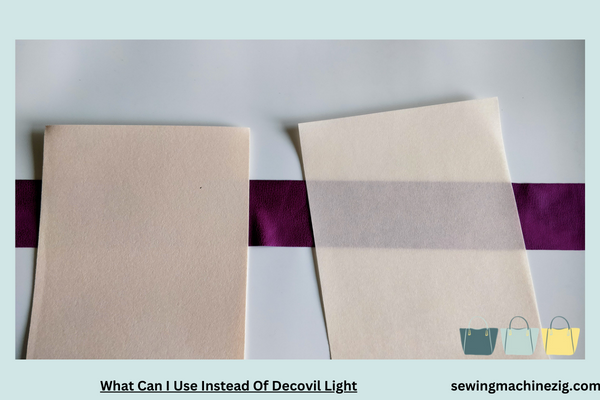
Fusible fleece is a popular choice in sewing projects for adding a layer of warmth, structure, and softness. However, there are instances where you may find yourself without fusible fleece or prefer an alternative.
In this comprehensive guide, we will explore several substitutes for fusible fleece and provide step-by-step instructions on how to use them effectively.
Alternatives to Fusible Fleece:
- Quilt Batting:
- Quilt batting, available in various thicknesses and materials, is an excellent substitute for fusible fleece. Opt for low-loft batting for lighter projects and high-loft for added warmth.
- Flannel Fabric:
- A double layer of flannel fabric can be a cozy alternative. Choose flannel with a similar weight to fusible fleece for comparable results.
- Felt:
- Felt is a dense fabric that provides structure. While not as lofty as fusible fleece, it works well for projects where a stiffer feel is desired.
- Insulating Materials:
- Insulating materials like Insul-Bright, often used in pot holders, can be an effective substitute. It adds a layer of thermal insulation to your project.
- Cotton Woven Interfacing:
- Medium to heavyweight woven interfacing, when used in multiple layers, can provide stability and structure similar to fusible fleece.
Step-by-Step Guide on How to Use Alternatives to Fusible Fleece:
Step 1: Choose Your Substitute
Select the alternative material based on your project’s requirements. Consider the weight, thickness, and desired characteristics of the substitute in comparison to fusible fleece.
Step 2: Prepare Your Materials
Gather the necessary materials, including your chosen substitute, fabric, a sewing machine, iron, and any additional notions required for your specific project.
Step 3: Cut Your Substitute Material
Using the pattern or measurements for your project, cut the substitute material to the required size. Take into account any seam allowances specified in your pattern.
Step 4: Layer Your Fabric
Place your main fabric pieces right sides together, and if applicable, position the substitute material on the wrong side of one of the fabric pieces. Ensure that all edges align properly.
Step 5: Pin or Baste Layers Together
Secure the layers together by either pinning or basting along the edges. This prevents shifting during the sewing process and ensures that your substitute material stays in place.
Step 6: Sew Layers Together
Using a sewing machine, stitch along the edges of your fabric layers, leaving an opening for turning if your project requires it. Use a straight stitch or a stitch suitable for your specific project.
Step 7: Trim Excess Material
Trim any excess substitute material and fabric, especially around corners and curves, to reduce bulk. Be careful not to cut into your stitches.
Step 8: Turn and Press
If your project requires turning, carefully turn it right side out. Press the fabric and substitute material with an iron to smooth out any wrinkles and create a neat appearance.
Step 9: Complete Your Project as Usual
Continue with the remaining steps of your project as you would when using fusible fleece. This may include additional sewing, quilting, or attaching other elements to your creation.
Common Issues and Solutions:
- Substitute Material Not Providing Enough Structure:
- Issue: The chosen substitute doesn’t offer the desired level of structure.
- Solution: Double up on the substitute material or consider using a different alternative with more heft.
- Difficulty in Turning the Project:
- Issue: Turning the project right side out is challenging due to the thickness of the substitute material.
- Solution: Use a turning tool or chopstick to gently push out corners and edges. Take your time to avoid stressing the seams.
- Difficulty Sewing Through Layers:
- Issue: Sewing through the substitute material and multiple fabric layers is challenging.
- Solution: Use a heavy-duty or quilting needle suitable for your chosen substitute. Adjust your sewing machine’s tension if needed.
- Substitute Material Not Adhering Like Fusible Fleece:
- Issue: The substitute material doesn’t adhere to the fabric like fusible fleece.
- Solution: If adhesion is crucial, consider using a spray adhesive or a fusible web product to secure the substitute material in place before sewing.
Additional Tips:
- Test Before Starting: Always test your chosen substitute on a scrap piece before committing to your main project. This allows you to assess its compatibility and make any necessary adjustments.
- Consider the Finished Look: Some substitutes may alter the final appearance or drape of your project. Keep this in mind, especially if your pattern was designed specifically for fusible fleece.
- Experiment with Stitching Patterns: Depending on the substitute material chosen, consider experimenting with different quilting or stitching patterns to enhance both the aesthetic and structural aspects of your project.
By following this step-by-step guide and addressing common issues, you’ll confidently navigate the use of alternatives to fusible fleece in your sewing projects. Whether you’re improvising due to materials on hand or exploring new options intentionally, these substitutes can offer versatility in your creative endeavors. Happy sewing!
What Can I Use Instead Of Decovil Light

Decovil Light is a popular stabilizer known for adding structure and firmness to various crafting projects. However, there are instances when you may need an alternative due to availability or specific project requirements.
In this detailed guide, “What Is Interfacing In Sewing“we will delve into substitutes for Decovil Light and provide step-by-step instructions on how to use them effectively, ensuring your crafting journey remains versatile and satisfying.
Substitutes for Decovil Light:
- Peltex:
- Peltex is a heavyweight stabilizer with a firm hand, making it suitable for projects that require structure and stability. It comes in both sew-in and fusible varieties.
- Bosal In-R-Form:
- This foam stabilizer is often used in bag-making and offers a lightweight yet sturdy alternative to Decovil Light. It provides structure without adding excessive weight to your projects.
- Heavyweight Interfacing:
- Several heavyweight interfacing options, such as sew-in or fusible, can be used as substitutes. Choose an interfacing that matches the desired level of firmness for your project.
- Timtex:
- Timtex, often used in hat-making and fabric bowls, is a stiff interfacing that can serve as a suitable substitute. It provides rigidity and holds shapes well.
Step-by-Step Guide on How to Use Alternatives to Decovil Light:
Step 1: Choose Your Substitute
Evaluate your project’s requirements and select the substitute material based on the desired level of firmness, flexibility, and ease of use. Consider the weight and characteristics of the substitute in comparison to Decovil Light.
Step 2: Gather Your Materials
Collect the necessary materials, including your chosen substitute, fabric, a sewing machine, an iron, and any additional notions required for your specific project.
Step 3: Cut Your Substitute Material
Using the pattern or measurements for your project, cut the substitute material to the required size. Pay attention to any seam allowances specified in your pattern.
Step 4: Prepare Your Fabric
Place your main fabric pieces right side up on your work surface. If using a fusible substitute, position it with the fusible side down on the wrong side of one of the fabric pieces. Ensure that all edges align properly.
Step 5: Pin or Baste Layers Together
Secure the layers together by either pinning or basting along the edges. This prevents shifting during the sewing process and ensures that your substitute material stays in place.
Step 6: Sew Layers Together
Using a sewing machine, stitch along the edges of your fabric layers, leaving an opening for turning if your project requires it. Use a straight stitch or a stitch suitable for your specific project.
Step 7: Trim Excess Material
Trim any excess substitute material and fabric, especially around corners and curves, to reduce bulk. Be careful not to cut into your stitches.
Step 8: Turn and Press
If your project requires turning, carefully turn it right side out. Press the fabric and substitute material with an iron to smooth out any wrinkles and create a neat appearance.
Step 9: Complete Your Project as Usual
Continue with the remaining steps of your project as you would when using Decovil Light. This may include additional sewing, quilting, or attaching other elements to your creation.
Common Issues and Solutions:
- Substitute Material Not Providing Enough Structure:
- Issue: The chosen substitute doesn’t offer the desired level of structure.
- Solution: Double up on the substitute material or consider using a different alternative with more heft.
- Difficulty in Turning the Project:
- Issue: Turning the project right side out is challenging due to the thickness of the substitute material.
- Solution: Use a turning tool or chopstick to gently push out corners and edges. Take your time to avoid stressing the seams.
- Difficulty Sewing Through Layers:
- Issue: Sewing through the substitute material and multiple fabric layers is challenging.
- Solution: Use a heavy-duty or quilting needle suitable for your chosen substitute. Adjust your sewing machine’s tension if needed.
- Substitute Material Not Adhering Like Decovil Light:
- Issue: The substitute material doesn’t adhere to the fabric like Decovil Light.
- Solution: If adhesion is crucial, consider using a spray adhesive or a fusible web product to secure the substitute material in place before sewing.
Additional Tips:
- Test Before Starting: Always test your chosen substitute on a scrap piece before committing to your main project. This allows you to assess its compatibility and make any necessary adjustments.
- Consider the Finished Look: Some substitutes may alter the final appearance or drape of your project. Keep this in mind, especially if your pattern was designed specifically for Decovil Light.
- Experiment with Stitching Patterns: Depending on the substitute material chosen, consider experimenting with different quilting or stitching patterns to enhance both the aesthetic and structural aspects of your project.
By following this step-by-step guide and addressing common issues, you’ll confidently navigate the use of alternatives to Decovil Light in your crafting projects. Whether you’re improvising due to materials on hand or exploring new options intentionally, these substitutes can offer versatility in your creative endeavors. Happy crafting!
Conclusion
In conclusion, demystifying What Is Interfacing In Sewing unveils a crucial ally in the world of garment construction. This versatile material provides structural support, enhancing the durability and shape of your creations.
By understanding how to use interfacing, you unlock the potential to elevate your sewing projects, ensuring professional-looking results. Whether reinforcing collars, cuffs, or adding stability to fabrics, interfacing adds a layer of finesse to your craft. So, embrace this essential tool and witness your sewing endeavors reach new heights.
FAQS
Q1: What is interfacing in sewing, and why is it used?
A1: Interfacing is a stabilizing material applied to fabrics to add structure, support, and durability. It’s commonly used in areas like collars, cuffs, and waistbands to prevent them from becoming limp or losing shape.
Q2: Are there different types of interfacing available for sewing projects?
A2: Yes, there are various types of interfacing, including fusible and sew-in options. Fusible interfacing adheres with heat, while sew-in interfacing is stitched into place. Each type serves specific purposes based on project requirements.
Q3: Can interfacing be used with all types of fabrics?
A3: Interfacing is versatile and can be used with most fabrics. However, it’s essential to choose the right type and weight of interfacing based on the fabric you’re working with to ensure proper compatibility. “What Is Interfacing In Sewing“
Q4: How do I apply fusible interfacing to fabric?
A4: Place the fusible side of the interfacing against the wrong side of the fabric. Use a pressing cloth and apply heat with an iron. Follow the manufacturer’s instructions for specific temperature and duration. “What Is Interfacing In Sewing“
Q5: Can interfacing be removed from fabric once it’s applied?
A5: Removing interfacing can be challenging, and it may damage the fabric. It’s advisable to double-check placement before applying heat in the case of fusible interfacing. “What Is Interfacing In Sewing“
Q6: Are there alternatives to traditional interfacing in sewing projects?
A6: Yes, certain fabrics, like organza or muslin, can be used as alternatives to interfacing, providing similar stabilization. However, interfacing is specifically designed for this purpose and often yields more predictable results. “What Is Interfacing In Sewing“

